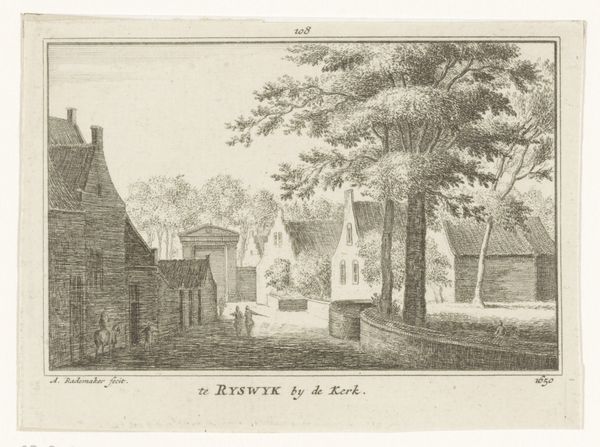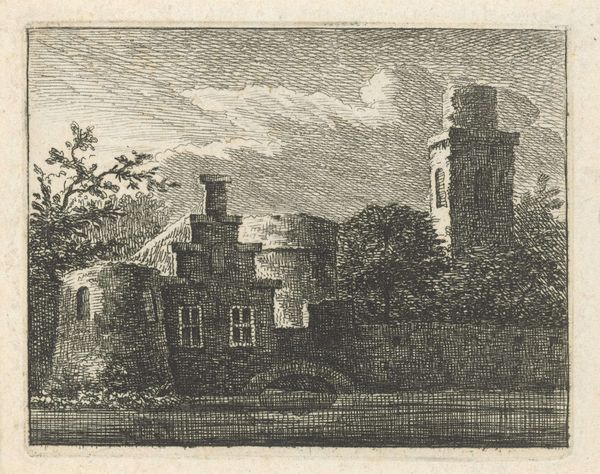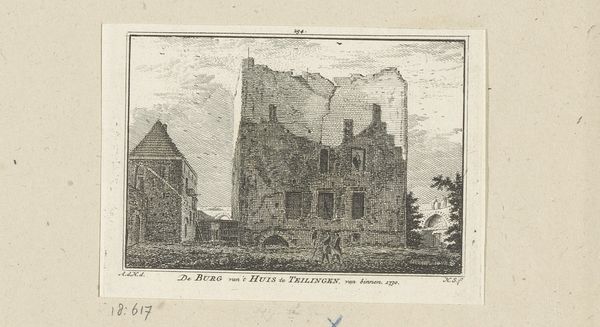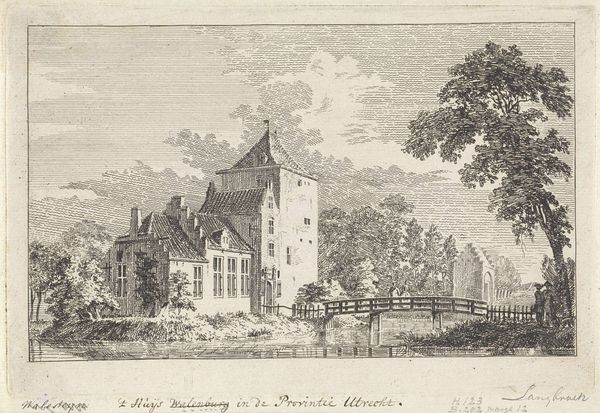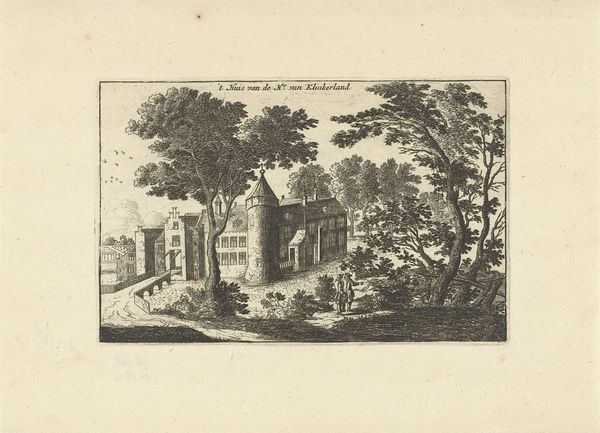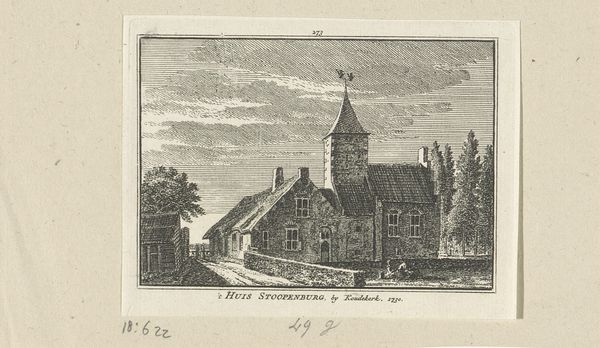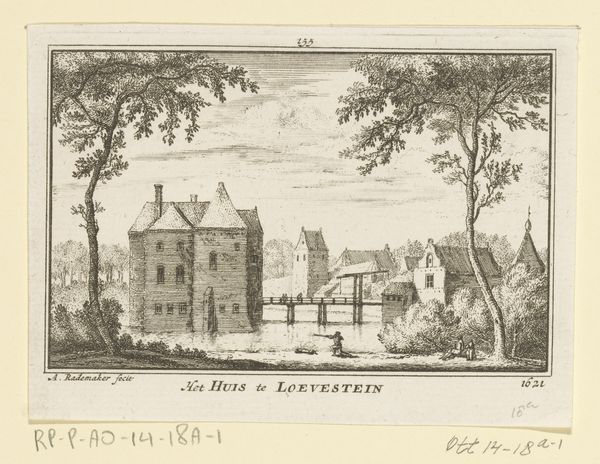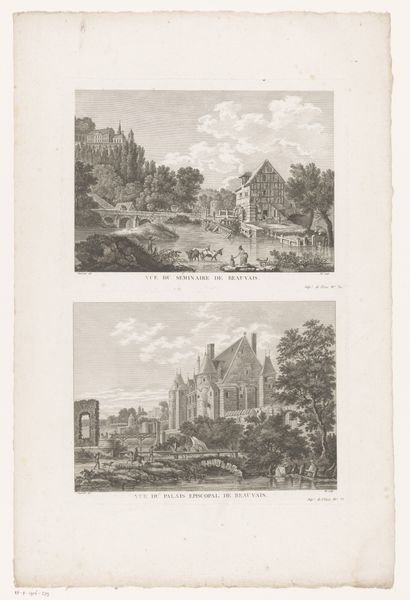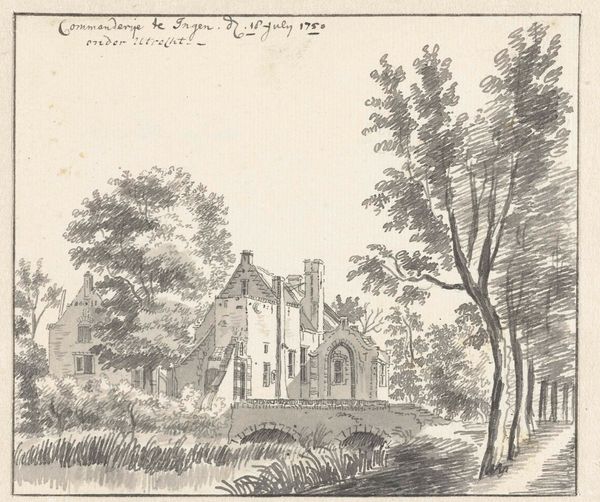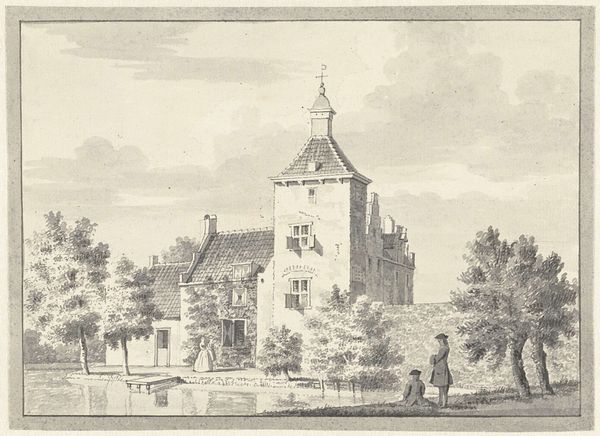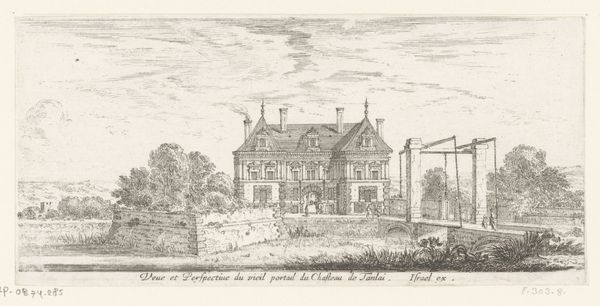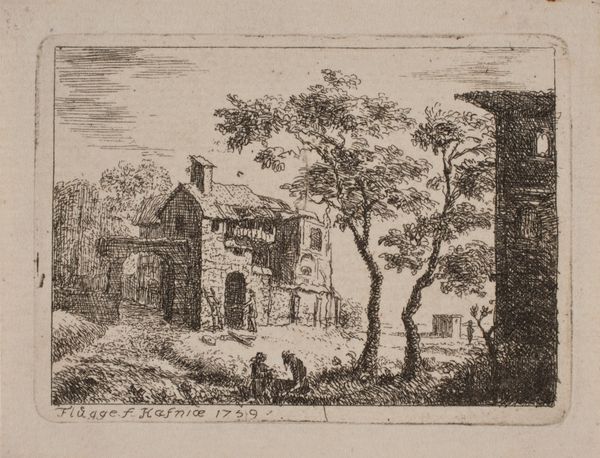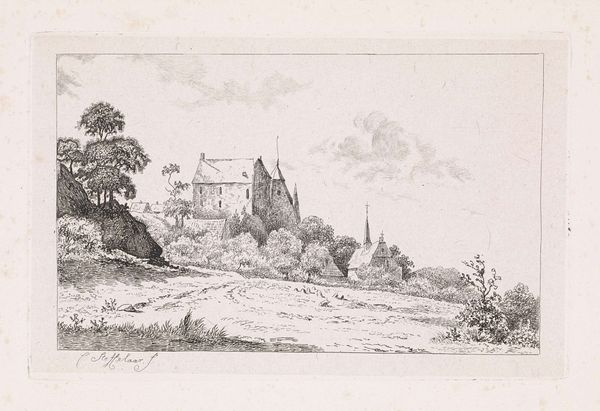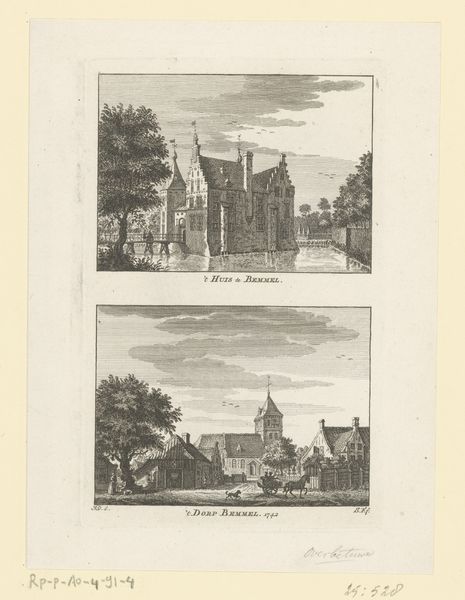
engraving
#
aged paper
#
light pencil work
#
baroque
#
old engraving style
#
landscape
#
cityscape
#
engraving
Dimensions: height 76 mm, width 99 mm
Copyright: Rijks Museum: Open Domain
Editor: This engraving, "Gezicht op kasteel Stormerdijk in Jutphaas" by Hendrik Spilman, dated sometime between 1745 and 1774, really gives off a sense of quiet, almost melancholic grandeur. The landscape seems so meticulously rendered, yet the overall tone is somewhat muted. What can you tell me about its historical context and what this image might have meant to its contemporary viewers? Curator: It's fascinating to consider this piece through the lens of its public role. Prints like this, circulating in the mid-18th century, were vital in shaping perceptions of landscape and identity. Notice the precise detail in the depiction of Stormerdijk Castle. Engravings of estates like this, commissioned and widely distributed, served as visual markers of status and power for the elite. Consider this as carefully managed propaganda; how does Spilman portray this castle? Does it suggest impregnability or accessibility? Editor: Accessibility, definitely. The little bridge leading to the entrance almost feels inviting, rather than imposing. But, propaganda? I never thought of landscapes that way. Curator: Landscapes were far from neutral. They often presented a curated view of property, projecting a particular image of its owner. In the Dutch Republic, wealthy landowners were eager to demonstrate their cultivated tastes and connections to the land. These images were often circulated as part of larger albums of estates and manors, which begs the question: who was this for and who was left out of the imagery? Editor: So, this image isn't just a snapshot of a castle. It's making a statement about wealth and status in 18th century Dutch society. The serene beauty hides layers of social meaning. That gives me a lot to think about regarding other landscape art too. Curator: Exactly. Remember to consider how power structures inform artistic choices. Thinking about Spilman's intended audience helps reveal a richer understanding of the work.
Comments
No comments
Be the first to comment and join the conversation on the ultimate creative platform.
